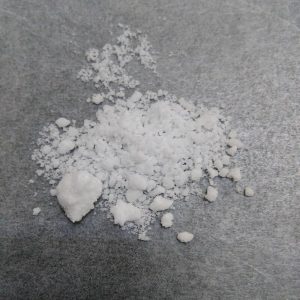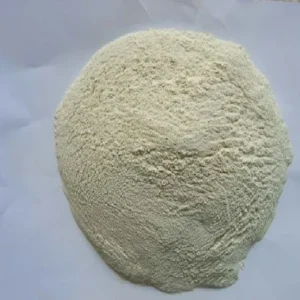Methoxphenidine (MXPCP) – Research Chemical for Analytical and Educational Use
Overview
Methoxphenidine ( MXPCP), commonly referred to as MXPCP, is a dissociative compound belonging to the arylcyclohexylamine class, structurally related to substances such as phencyclidine (PCP) and ketamine. Originally synthesized in the early 2010s, MXPCP has since attracted significant attention within research communities for its unique pharmacological profile and its ability to act as an NMDA receptor antagonist. This makes it a valuable compound for neurochemical, psychopharmacological, and receptor-binding studies aimed at understanding the mechanisms of perception, cognition, and consciousness.
Chemical Information of Methoxphenidine (MXPCP)
-
IUPAC Name: 1-[1-(2-methoxyphenyl)cyclohexyl]piperidine
-
Chemical Formula: C18H27NO
-
Molecular Weight: 273.41 g/mol
-
Synonyms: MXP, Methoxyphencyclidine, 2-MeO-PCP
-
Chemical Class: Arylcyclohexylamine
-
Form: Fine crystalline or powder (varies by supplier specification)
-
Purity: ≥98% (research grade)
MXPCP is characterized by its high chemical stability and strong binding affinity to the NMDA receptor site, which makes it an ideal candidate for binding assays, analytical reference standards, and forensic toxicology calibration.
Pharmacological Profile and Mechanism of Action
Methoxphenidine acts primarily as a non-competitive NMDA receptor antagonist—a mechanism shared by many dissociative anesthetics. By inhibiting the action of glutamate at NMDA receptors, MXPCP modulates excitatory neurotransmission within the central nervous system. Research suggests that this process is integral to understanding neural plasticity, memory function, and consciousness modulation.
Additionally, some preliminary receptor mapping studies indicate potential secondary interactions with dopamine and serotonin transporters, although these effects are far weaker compared to NMDA antagonism. This receptor selectivity contributes to MXPCP’s unique pharmacodynamic and behavioral profile, making it a subject of interest in modern neuroscience and psychopharmacology research.
Applications in Research
Methoxphenidine (MXPCP) is intended strictly for scientific and forensic use. It should not be used for human or animal consumption. Its principal applications include:
-
Receptor Binding Studies – Examining the interaction between MXPCP and NMDA receptor subtypes to understand the structure–activity relationship (SAR) of dissociative anesthetics.
-
Analytical Reference Standard – Utilized by analytical laboratories to develop and validate detection methods such as GC-MS, LC-MS/MS, and FTIR spectroscopy.
-
Neurochemical Research – Investigating glutamatergic signaling pathways, neuroplasticity, and the molecular underpinnings of consciousness and perception.
-
Toxicological Calibration – Used in forensic toxicology for identifying and quantifying novel dissociatives in biological samples.
-
Educational Use – Serving as a reference compound in academic settings for chemical synthesis, structure elucidation, and pharmacological modeling.
Physical and Chemical Properties of Methoxphenidine (MXPCP)
-
Appearance: White to off-white crystalline powder
-
Solubility: Soluble in ethanol, acetone, and other organic solvents; sparingly soluble in water
-
Boiling Point: Approx. 390°C (decomposes)
-
Storage Conditions: Store in a cool, dry, and well-ventilated area, away from direct sunlight and moisture. For optimal preservation, it should be kept in airtight containers under controlled laboratory conditions.
Proper handling procedures and personal protective equipment (PPE) such as gloves, goggles, and lab coats are mandatory when working with MXPCP in a research environment.
Safety, Handling, and Legal Status
Warning: Methoxphenidine (MXPCP) is a research chemical and not approved for human or veterinary use. It may pose health risks if misused, including potential neurotoxicity and dissociative effects similar to other NMDA antagonists. Researchers are advised to handle it following standard laboratory safety protocols.
The legal status of MXPCP varies by country. In some jurisdictions, it may be classified as a controlled substance or an analog of PCP, subject to restrictions under analogue laws. Users must ensure compliance with local, state, and federal regulations before purchasing, possessing, or studying this compound.
Storage and Stability
For long-term stability, Methoxphenidine (MXPCP) should be stored:
-
At temperatures between 2°C and 8°C
-
In an airtight, light-resistant container
-
In a low-humidity environment to prevent degradation
Under these conditions, the compound maintains its chemical integrity for an extended period, making it suitable for longitudinal analytical studies.
Quality Assurance
Each batch of Methoxphenidine (MXPCP) undergoes rigorous analytical verification using advanced chromatographic and spectrometric techniques, ensuring a minimum purity of 98%. Certificates of Analysis (COA) and Material Safety Data Sheets (MSDS) are provided upon request to verify quality and assist in compliance with laboratory standards.
Conclusion
Methoxphenidine (MXPCP) remains an essential compound for researchers exploring the complex dynamics of NMDA receptor modulation and dissociative pharmacology. Its distinct chemical structure, stability, and receptor affinity make it a valuable reference material for forensic, neurochemical, and analytical research.
When handled responsibly and used within the parameters of laboratory research, MXPCP contributes meaningfully to scientific understanding of neurotransmission, anesthetic development, and receptor-binding mechanisms.





Clyde –
Quick service, discreetly packed and very pleased with my purchase.